RUDOLF GROSSMANN (Freiburg 1882 - 1941 Freiburg)
Die letzte Bitte
Lithografie/Papier, 26,8 × 20 cm
Titelblatt der „Lebenskomödie“ Reihe von 12 Farblithografien, Auflage 250, gedruckt von F. Bruckmann, Propyläen-Verlag-Berlin
beschriftet Sondern erlöse uns von dem Übel
SCHÄTZPREIS / ESTIMATE °€ 100 - 200
STARTPREIS / STARTING PRICE °€ 100
RUDOLF GROSSMANN (Freiburg 1882 - 1941 Freiburg)
The final plea
lithography/paper, 26,8 x 20 cm
sheet size 37 x 29 cm
inscribed sondern erloese uns von dem uebel (but deliver us from evil)
front page of "Lebenskomoedie" series of 12 color lithographies, circulation 250, printed by F. Bruckmann, Propylaeen-publishers-Berlin
Rudolf Wilhelm Walther Großmann (Rudolf Großmann, auch Grossmann) war ein deutscher Maler und Grafiker. Sein Großvater war der badische Hofmaler Wilhelm Dürr, seine Mutter ebenfalls Malerin. Nach anfänglichem Medizinstudium ging Großmann für fünf Jahre nach Paris, wo er bei Lucien Simon studierte. Unter dem Einfluss von Paul Cézasse widmete er sich dort der Landschaftsmalerei. Mit Jules Pascin bereiste er Belgien und die Niederlande. AB 1910 hielt er sich in Berlin auf und unternahm von dort mit seinem Freund Hans Purrmann ausgedehnte Reisen. In Berlin betätigte sich als Grafiker, fertigte Buchillustrationen und Porträts von, letztere erschienen u. a. anderem im „Simplicissimus“. 1928 wurde Großmann Professor an der Kunsthochschule Berlin. Er war Mitglied der Berliner Secession und des Deutschen Künstlerbundes. Nach der Machtergreifung wurde er als Professor abgesetzt und zog sich nach Freiburg zurück. Seine Malerei galten den Nazis als „entartet“. 1937 wurden in der Aktion „Entartete Kunst“ mehr als 500 seiner Arbeiten beschlagnahmt und z. T. vernichtet. Drei seiner Werke wurden in der NS-Propagandaausstellung „Entartete Kunst“ gezeigt. Lovis Corinth fertigte ein Porträt in Öl von Großmann an. Großmann illustrierte u. a. Bücher von Joachim Ringelnatz und Erich Kästner.
Bitte beachten:
Der Kaufpreis besteht aus Meistbot zuzüglich des Aufgeldes, der Umsatzsteuer sowie gegebenenfalls der Folgerechtsabgabe. Bei Normalbesteuerung (mit ° gekennzeichnet) kommt auf das Meistbot ein Aufgeld in der Höhe von 24% hinzu. Auf die Summe von Meistbot und Aufgeld kommt die gesetzliche Umsatzsteuer von 13%, bei Fotografien 20% hinzu.
Bei Differenzbesteuerung beträgt das Aufgeld 28%. Die Umsatzsteuer ist bei der Differenzbesteuerung inkludiert.
Rudolf Wilhelm Walther Großmann (Rudolf Großmann, also Grossmann) was a German painter and graphic artist. His grandfather was the Baden court painter Wilhelm Dürr, and his mother was also a painter. After initially studying medicine, Großmann went to Paris for five years, where he studied with Lucien Simon. Under the influence of Paul Cézasse, he dedicated himself to landscape painting. With Jules Pascin he traveled to Belgium and the Netherlands. From 1910 he lived in Berlin and from there traveled extensively with his friend Hans Purrmann. In Berlin he worked as a graphic artist and made book illustrations and portraits, the latter of which appeared among others. among other things in “Simplicissimus”. In 1928 Großmann became a professor at the Berlin Art School. He was a member of the Berlin Secession and the German Artists' Association. After the seizure of power, he was deposed as a professor and retired to Freiburg. The Nazis considered his paintings “degenerate” ("entartet"). In 1937, more than 500 of his works were confiscated in the “Entartete Kunst” campaign and, for example, T. destroyed. Three of his works were shown in the Nazi propaganda exhibition “Entartete Kunst” (Degenerate Art). Lovis Corinth made an oil portrait of Großmann. Großmann illustrated, among other things, Books by Joachim Ringelnatz and Erich Kästner.
PLEASE NOTE:
The purchase price consists of the highest bid plus the buyer's premium, sales tax and, if applicable, the fee of artists resale rights. In the case of normal taxation (marked °), a premium of 24% is added to the highest bid. The mandatory sales tax of 13%, for photographys 20%, is added to the sum of the highest bid and the buyer's premium.
The buyer's premium amounts to 28% in case of differential taxation. The sales tax is included in the differential taxation.
RUDOLF GROSSMANN (Freiburg 1882 - 1941 Freiburg)
Die letzte Bitte
Lithografie/Papier, 26,8 × 20 cm
Titelblatt der „Lebenskomödie“ Reihe von 12 Farblithografien, Auflage 250, gedruckt von F. Bruckmann, Propyläen-Verlag-Berlin
beschriftet Sondern erlöse uns von dem Übel
SCHÄTZPREIS / ESTIMATE °€ 100 - 200
STARTPREIS / STARTING PRICE °€ 100
RUDOLF GROSSMANN (Freiburg 1882 - 1941 Freiburg)
The final plea
lithography/paper, 26,8 x 20 cm
sheet size 37 x 29 cm
inscribed sondern erloese uns von dem uebel (but deliver us from evil)
front page of "Lebenskomoedie" series of 12 color lithographies, circulation 250, printed by F. Bruckmann, Propylaeen-publishers-Berlin
Rudolf Wilhelm Walther Großmann (Rudolf Großmann, auch Grossmann) war ein deutscher Maler und Grafiker. Sein Großvater war der badische Hofmaler Wilhelm Dürr, seine Mutter ebenfalls Malerin. Nach anfänglichem Medizinstudium ging Großmann für fünf Jahre nach Paris, wo er bei Lucien Simon studierte. Unter dem Einfluss von Paul Cézasse widmete er sich dort der Landschaftsmalerei. Mit Jules Pascin bereiste er Belgien und die Niederlande. AB 1910 hielt er sich in Berlin auf und unternahm von dort mit seinem Freund Hans Purrmann ausgedehnte Reisen. In Berlin betätigte sich als Grafiker, fertigte Buchillustrationen und Porträts von, letztere erschienen u. a. anderem im „Simplicissimus“. 1928 wurde Großmann Professor an der Kunsthochschule Berlin. Er war Mitglied der Berliner Secession und des Deutschen Künstlerbundes. Nach der Machtergreifung wurde er als Professor abgesetzt und zog sich nach Freiburg zurück. Seine Malerei galten den Nazis als „entartet“. 1937 wurden in der Aktion „Entartete Kunst“ mehr als 500 seiner Arbeiten beschlagnahmt und z. T. vernichtet. Drei seiner Werke wurden in der NS-Propagandaausstellung „Entartete Kunst“ gezeigt. Lovis Corinth fertigte ein Porträt in Öl von Großmann an. Großmann illustrierte u. a. Bücher von Joachim Ringelnatz und Erich Kästner.
Bitte beachten:
Der Kaufpreis besteht aus Meistbot zuzüglich des Aufgeldes, der Umsatzsteuer sowie gegebenenfalls der Folgerechtsabgabe. Bei Normalbesteuerung (mit ° gekennzeichnet) kommt auf das Meistbot ein Aufgeld in der Höhe von 24% hinzu. Auf die Summe von Meistbot und Aufgeld kommt die gesetzliche Umsatzsteuer von 13%, bei Fotografien 20% hinzu.
Bei Differenzbesteuerung beträgt das Aufgeld 28%. Die Umsatzsteuer ist bei der Differenzbesteuerung inkludiert.
Rudolf Wilhelm Walther Großmann (Rudolf Großmann, also Grossmann) was a German painter and graphic artist. His grandfather was the Baden court painter Wilhelm Dürr, and his mother was also a painter. After initially studying medicine, Großmann went to Paris for five years, where he studied with Lucien Simon. Under the influence of Paul Cézasse, he dedicated himself to landscape painting. With Jules Pascin he traveled to Belgium and the Netherlands. From 1910 he lived in Berlin and from there traveled extensively with his friend Hans Purrmann. In Berlin he worked as a graphic artist and made book illustrations and portraits, the latter of which appeared among others. among other things in “Simplicissimus”. In 1928 Großmann became a professor at the Berlin Art School. He was a member of the Berlin Secession and the German Artists' Association. After the seizure of power, he was deposed as a professor and retired to Freiburg. The Nazis considered his paintings “degenerate” ("entartet"). In 1937, more than 500 of his works were confiscated in the “Entartete Kunst” campaign and, for example, T. destroyed. Three of his works were shown in the Nazi propaganda exhibition “Entartete Kunst” (Degenerate Art). Lovis Corinth made an oil portrait of Großmann. Großmann illustrated, among other things, Books by Joachim Ringelnatz and Erich Kästner.
PLEASE NOTE:
The purchase price consists of the highest bid plus the buyer's premium, sales tax and, if applicable, the fee of artists resale rights. In the case of normal taxation (marked °), a premium of 24% is added to the highest bid. The mandatory sales tax of 13%, for photographys 20%, is added to the sum of the highest bid and the buyer's premium.
The buyer's premium amounts to 28% in case of differential taxation. The sales tax is included in the differential taxation.
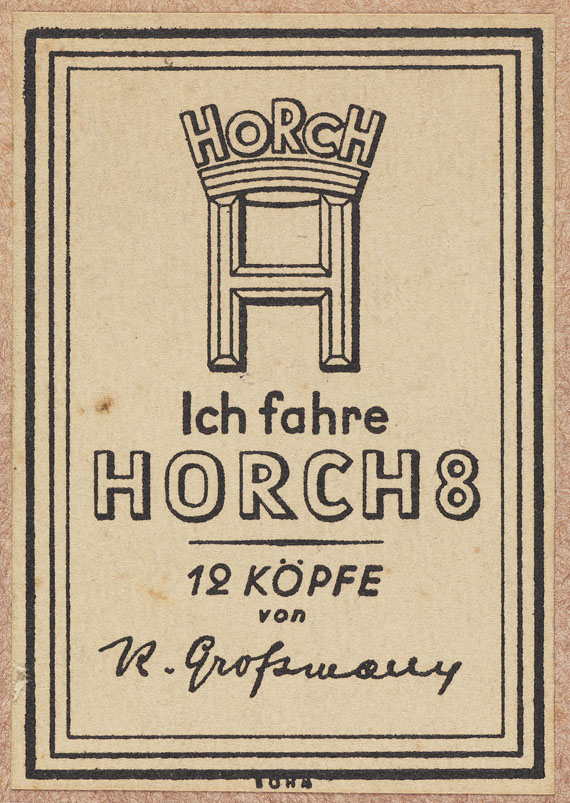




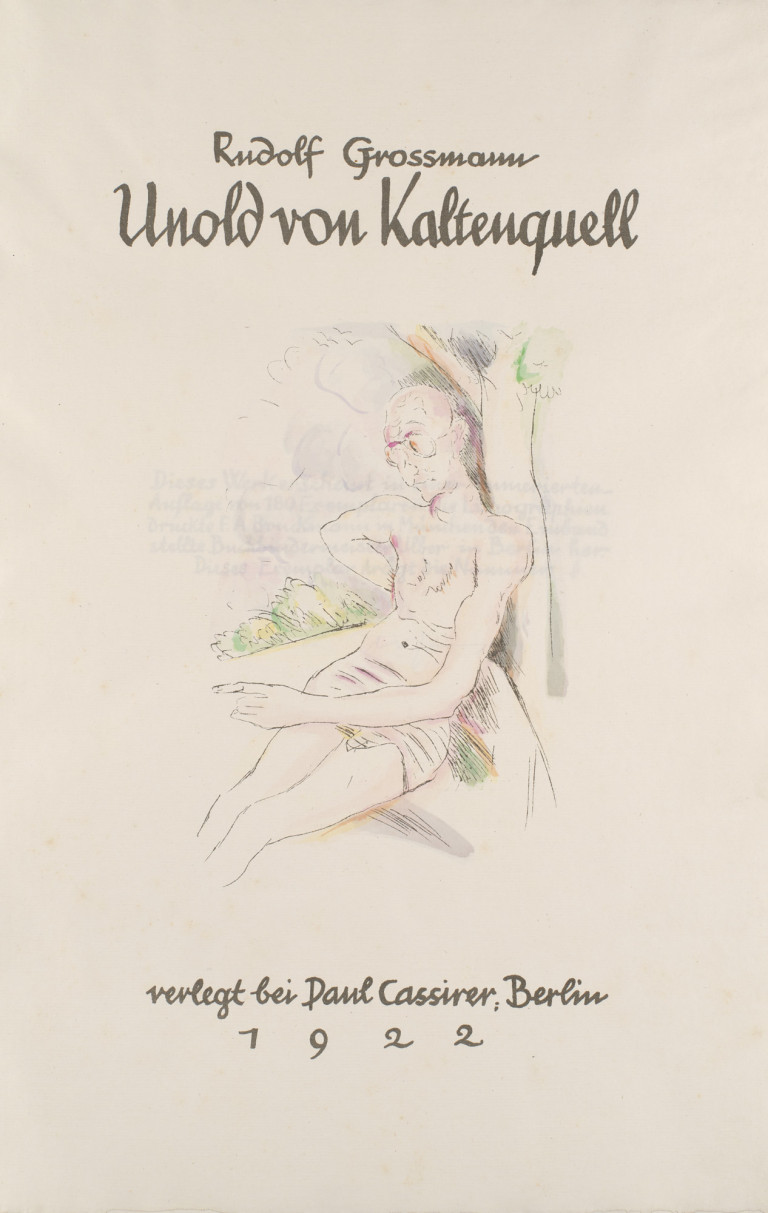
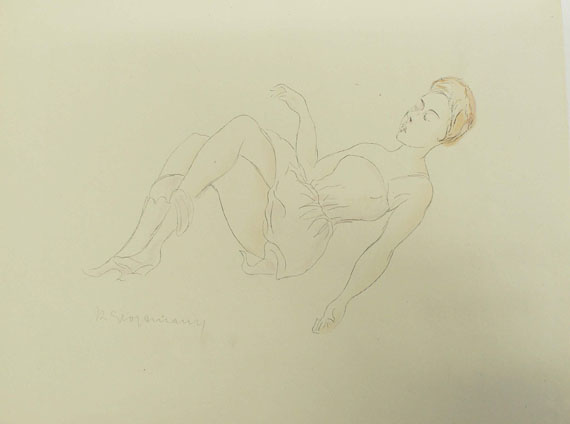




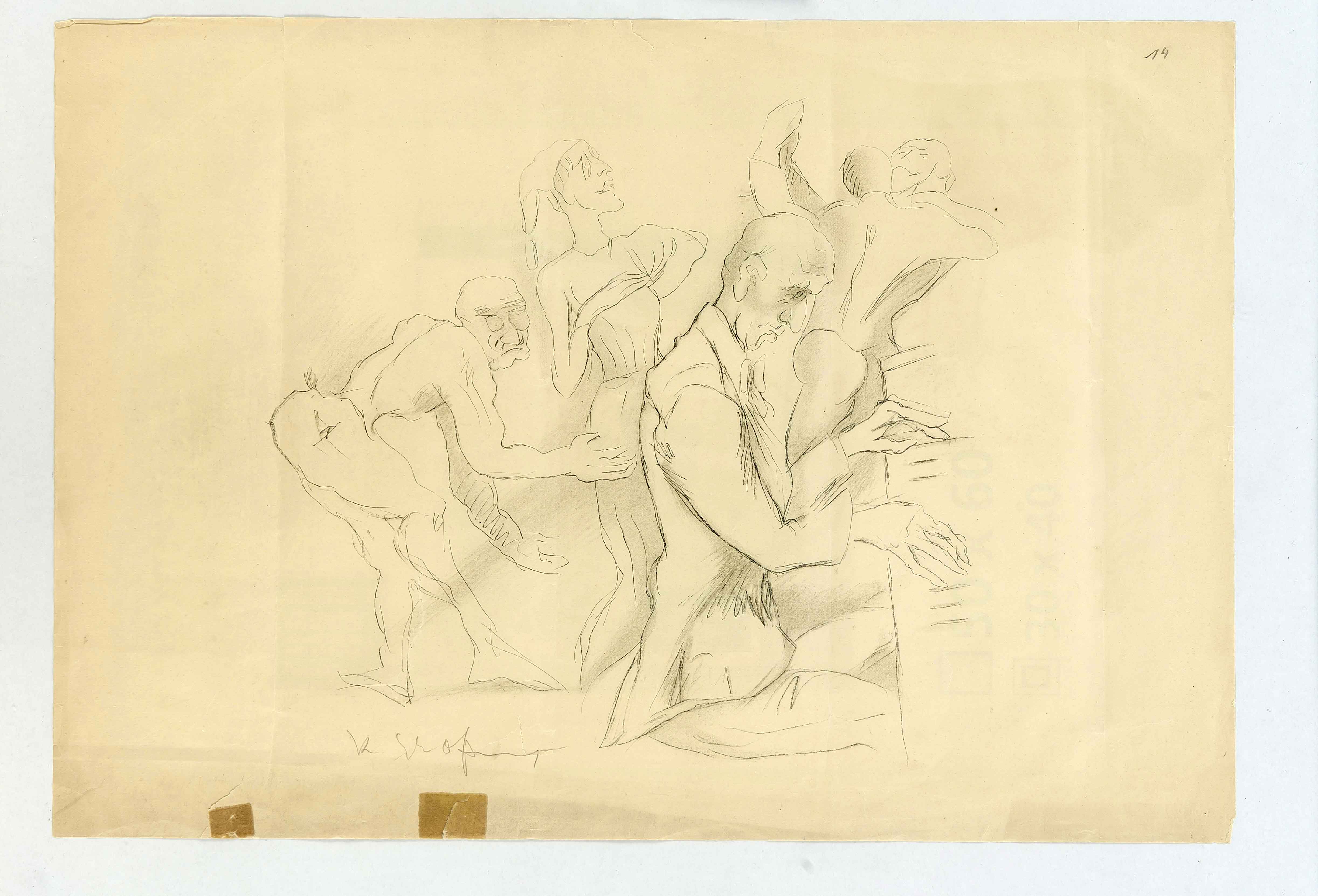
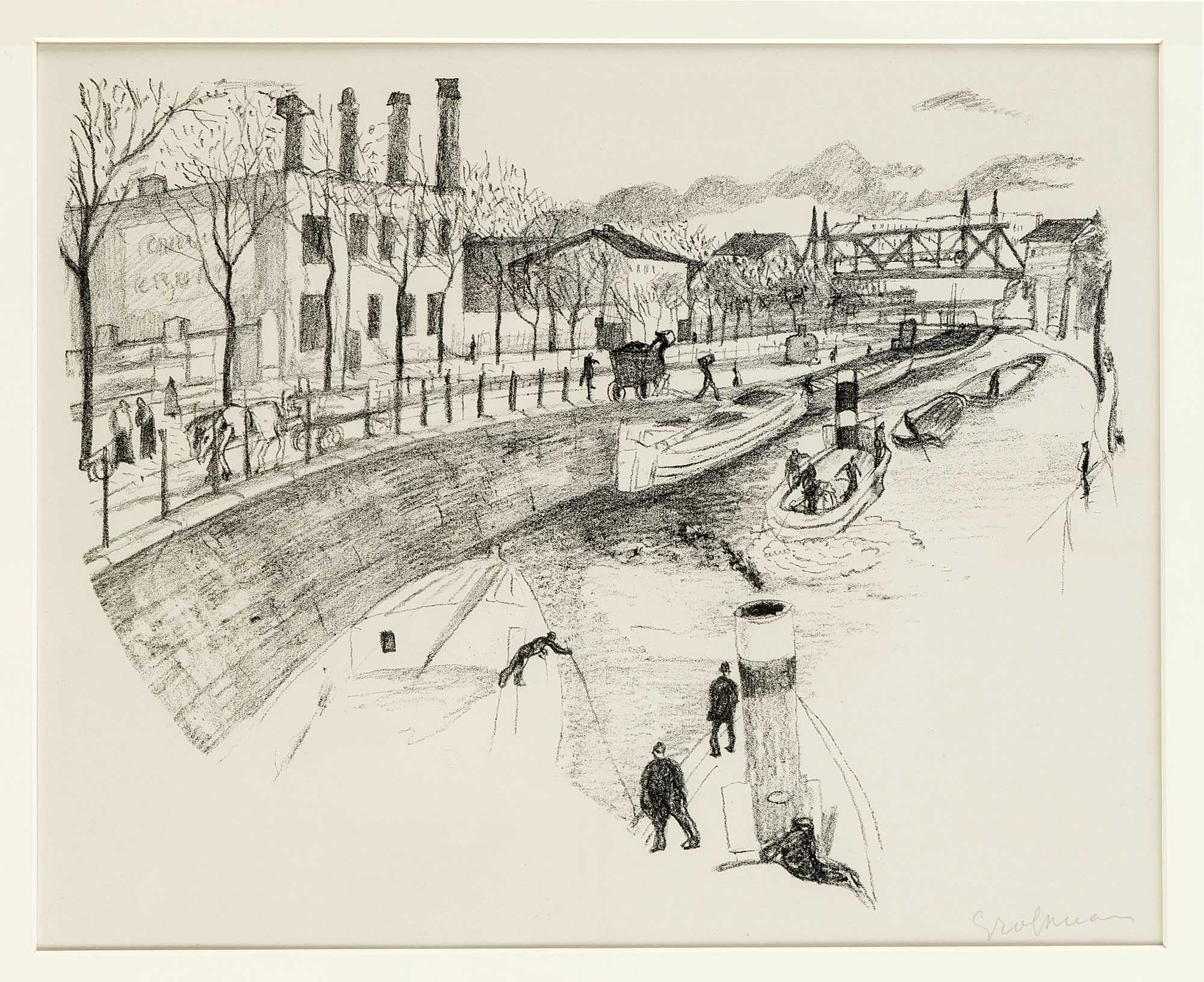

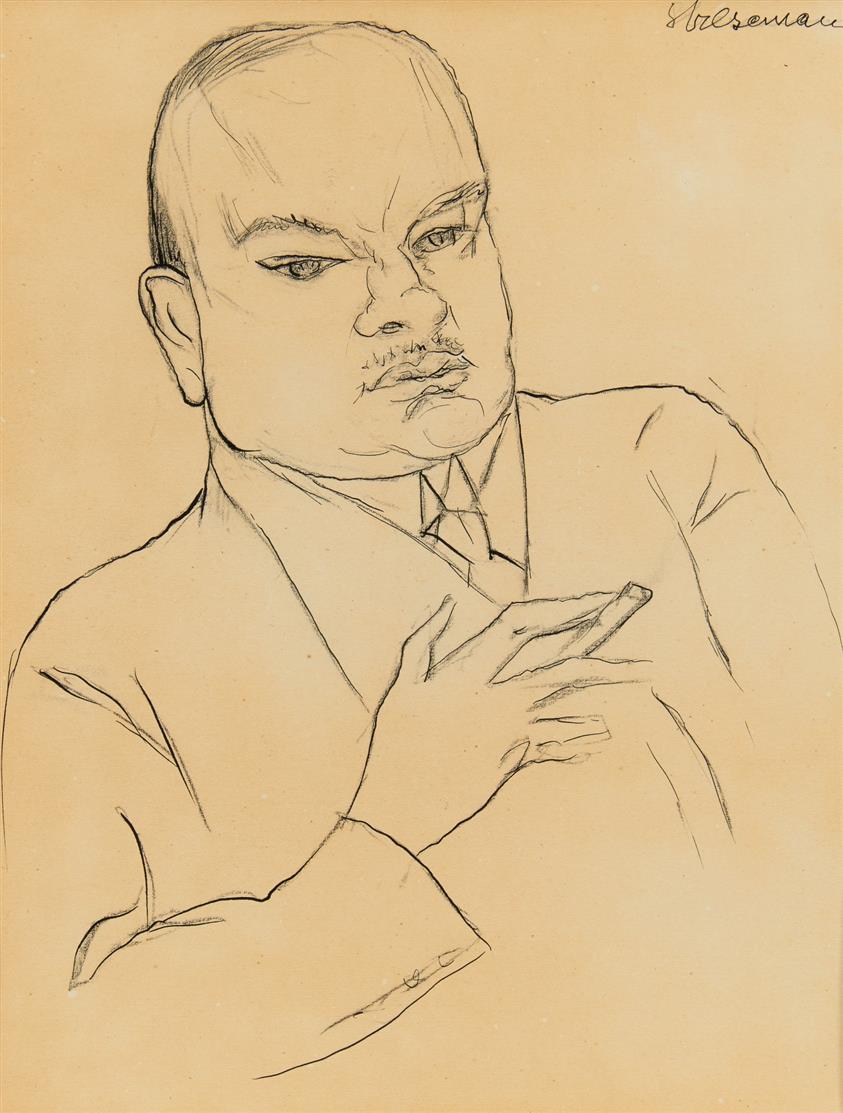
Testen Sie LotSearch und seine Premium-Features 7 Tage - ohne Kosten!
Lassen Sie sich automatisch über neue Objekte in kommenden Auktionen benachrichtigen.
Suchauftrag anlegen